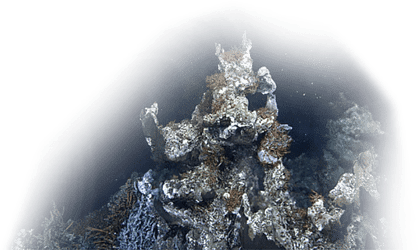Modern science is starting to take amateur scientists’ observations seriously. The impressive performance of over 500 citizen scientists who signed on for a study counting sablefish off the Tofino coast is heartening proof that we can all play a part in understanding the ocean, says one of the Ocean Networks Canada (ONC) scientists who co-authored the study.
That’s a key takeaway for World Oceans Day on 8 June, notes scientist Maia Hoeberechts, ONC associate director of user services (Figure 1).
“This study is about who can help science,” she says. “The theme for this year’s 25th anniversary of World Oceans Day is Our Oceans, Our Future, building interest and ability for individuals to make a difference within their own circles, in the community or at the global level.”
Figure 1. “We need to move beyond the view that an expert is the only person who can analyze the data we are collecting,” says Maia Hoeberechts, ONC associate director of user services. “It’s not new that citizens make scientifically useful observations. It’s new that science is taking them seriously.”
A vast collection of video is freely accessible through SeaTube, an application that is part of ONC’s sophisticated data management portal, Oceans 2.0. Citizen scientists can also watch live camera feeds and participate in scientific campaigns using the Digital Fishers tool. With 90,000 hours of archived data generated to date, the more eyeballs the better. Thanks to volunteer observers¾citizen scientists¾ more video data gets analyzed.
ONC’s recent fish-counting study asked volunteers to view deep-sea video samples from the observatory in Barkley Canyon to estimate the numbers of sablefish, also known as black cod (Figure 2). The objective was to test how amateur scientists performed in comparison to an expert biologist, a class of undergraduate students, and a computer algorithm monitoring the same video segments. Read the full study: Expert, Crowd, Students or Algorithm: who holds the key to deep-sea imagery ‘big data’ processing?
Figure 2. ONC recorded one-minute videos every half hour at Barkley Canyon and gave over 1,400 of these segments to participating citizen scientists. Some of the most enthusiastic participants annotated more than 100 clips.
The citizen scientists with some training did almost as well as the expert scientist, but all the groups of human observers proved better at fish-counting than the computer algorithm. “Knowing that citizen scientists can be called upon to help experts analyze vast amounts of data generated by the observatories offers tremendous potential to increase ONC’s vital impact, enrich human understanding, improve commercial fisheries management, and protect life under the sea,” says Hoeberechts.
Citizen scientist Harold Smith contributed over 10,000 annotations to ONC’s video database using the Digital Fishers crowdsourcing tool (Figure 3). “I have always had an interest in oceanographic research but, prior to this endeavor, I’ve never been in a position to contribute anything to the field,” comments Smith. “I like to think that I can make a contribution, albeit a small one, by participating in this project, and I have the time and resources to do so."
Figure 3. Harold Smith is the current all-time Digital Fishers Leader. His annotations are helping scientists tackle questions such as: What environmental factors influence the distribution of species in the deep? What is the biodiversity associated with deep-sea environments? How do species interact with each other and with their environment?
The sablefish study confirmed that “humans are expert observers,” says Hoeberechts. When they put their observational talents to work analyzing deep-sea videos and still-photo imagery, they contribute to scientific knowledge of a vast part of the Earth that’s unknown. More than 70 percent of the planet lies beneath the global ocean.
“We need to move beyond the view that an expert is the only person who can analyze the data we are collecting,” she says. “It’s not new that citizens make scientifically useful observations. It’s new that science is taking them seriously.” (Figure 4).
The Digital Fishers program (Figure 3) ) is a collaboration between ONC and the University of Victoria’s Centre for Global Studies. More than 1,000 amateur scientists from around the world now monitor ONC’s live video feeds and participate in studies like the sablefish count. Watch for a new Digital Fishers campaign in fall 2017.

Citizen scientists of all ages are invited to live dive with us during Expedition 2017: Wiring the Abyss, 7-26 June. Real-time camera feeds will feature underwater robots hard at work maintaining and expanding ONC’s west coast offshore observatories, while scientists and engineers on board the exploration vessel Nautilus talk about what they’re seeing.
